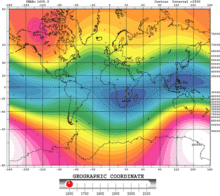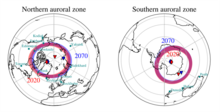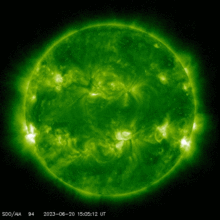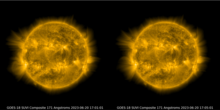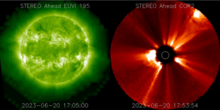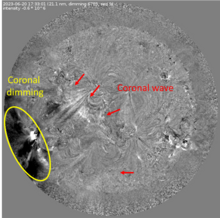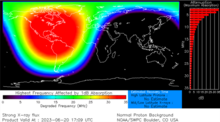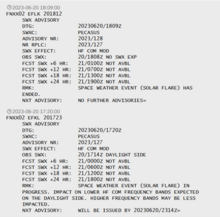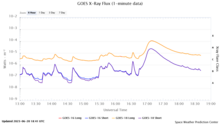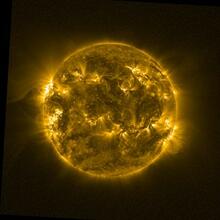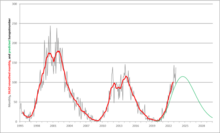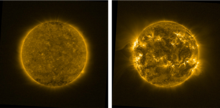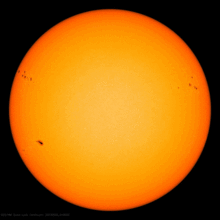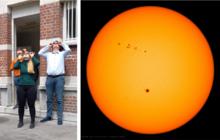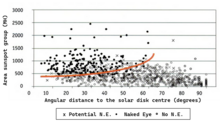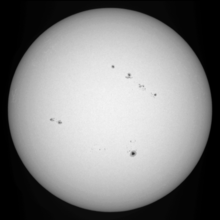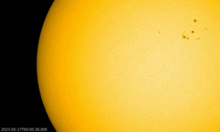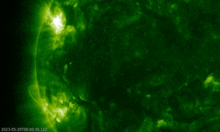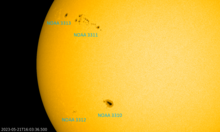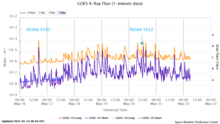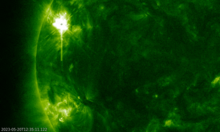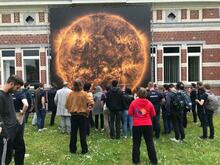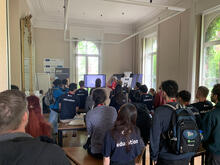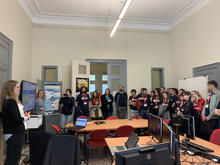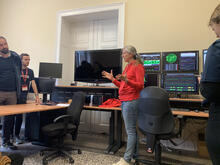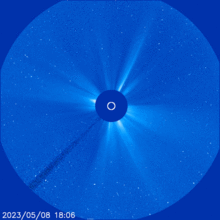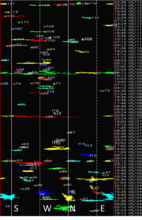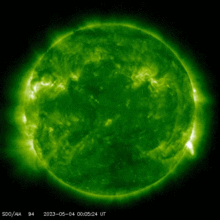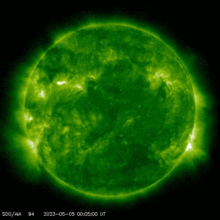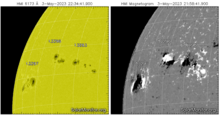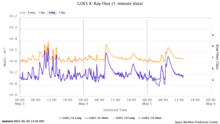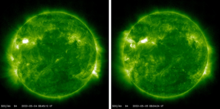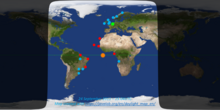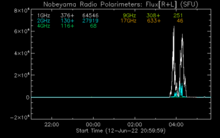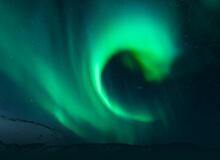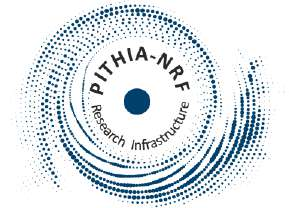news
Submitted on 2023-06-21
The persistent movement of the North magnetic pole towards Siberia may have some consequences on local space weather impacts such as aurora visibility and geomagnetically induced currents.
Submitted on 2023-06-20
After a drought of nearly 3 months, the Sun unleashed an X-class flare on 20 June.
Submitted on 2023-06-19
Due to a reshuffling of responsibilities, SILSO will from now on run under the single Directorship of Laure Lefèvre, and therefore any future questions related to the SILSO management or data should be addressed to Laure.Lefevre@oma.be. We take this opportunity to thank both Frédéric Clette and Laure Lefèvre for their dedication to the SILSO operations during many years.
Submitted on 2023-06-06
The STCE's SC25 Tracking page has been updated. Solar activity continues its march towards solar cycle maximum which is currently expected in 2024.
Submitted on 2023-05-30
Over the last 2 weeks, some sizeable sunspot groups were visible with the (protected) naked eye.
Submitted on 2023-05-22
Sunspot region NOAA 3311 rounded the Sun's northeast limb on 18 May and has since been a prolific M-class flare producer.
Submitted on 2023-05-17
On May 8, the STCE team was invited to teach at ESA's Academy in Transinne (BE) in a pilot for their new Space Weather Training Course.
30 students were selected for a week-long, in-depth school about space weather and its technological impacts. The STCE was responsible for giving the students a first introduction on how to forecast space weather events and impacts.

Submitted on 2023-05-15
The average daily number of coronal mass ejections (CMEs) was at high levels during the first 2 weeks of May.
Submitted on 2023-05-10
A trio of sunspot groups in the northeast solar quadrant were responsible for an important portion of the solar flares produced early May. Some of these flares were accompanied by strong emissions at radio frequencies.
Submitted on 2023-05-10
The Journal of Space Weather and Space Climate (JSWSC) currently has 3 Topical Issues (TIs) open for submission.
Pages
Zircon - This is a contributing Drupal Theme
Design by
WeebPal.

